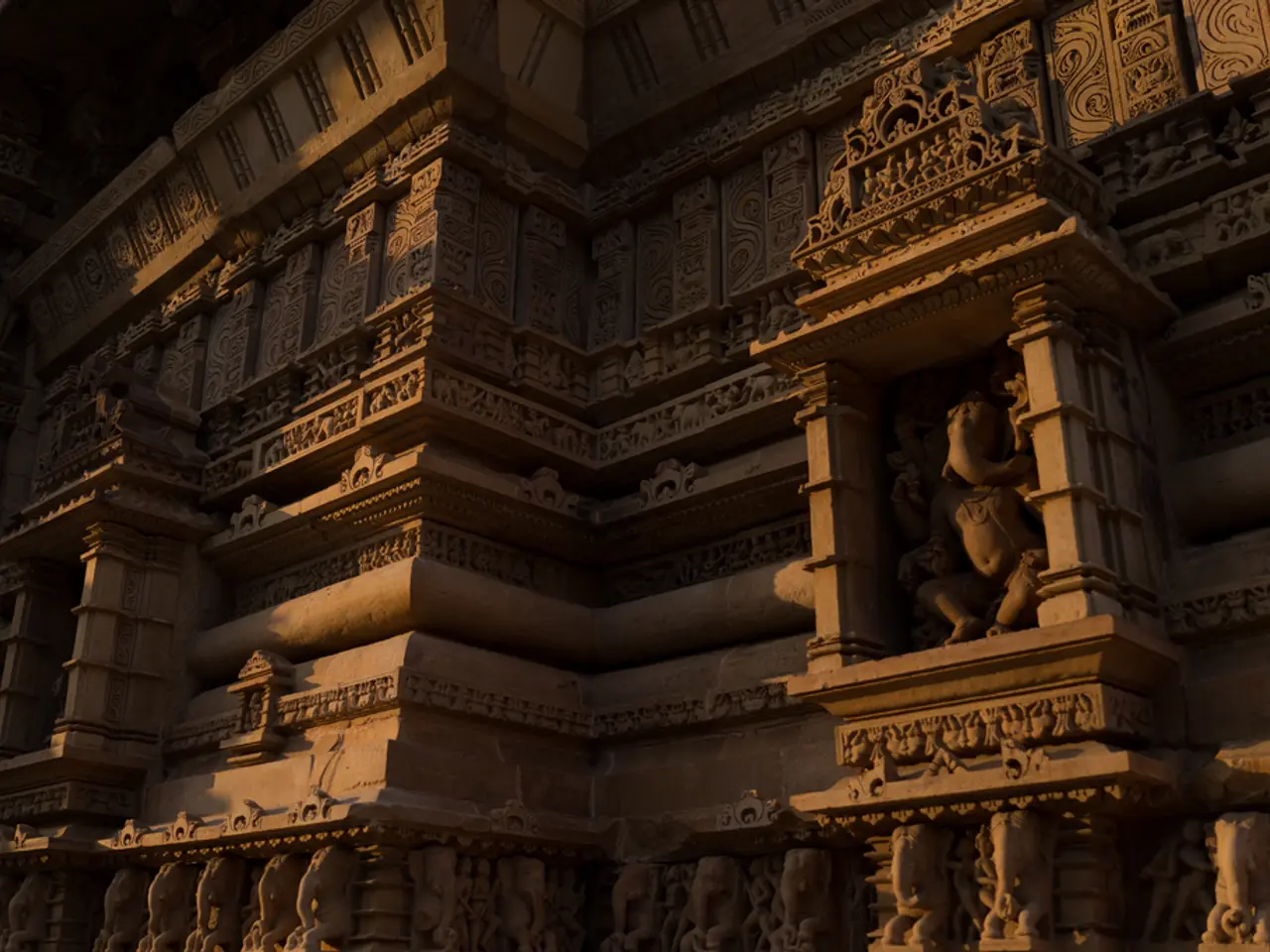Discovered: An ancient Roman mausoleum in France, similar to Emperor Augustus' tomb, unearthed by archaeologists
In the heart of the Rhône Valley, a thriving Roman colony and political hub, a significant archaeological discovery has been made. A large, circular tomb, reminiscent of the Mausoleum of Emperor Augustus in Rome, has been unearthed in Saint-Romain-en-Gal, near Lyon, France.
The mausoleum, built around 50 C.E., was a deliberate attempt to assert the builder's family's position within the Roman hierarchy. With an interior spanning just over 49 feet and standing nearly 20 feet tall, this monumental structure is largely intact, thanks to its preservation.
Only 18 tumulus-style mausoleums like this one have ever been documented in France, making this discovery a rare find. The mausoleum was likely built for a person of significant social or political status. However, the identity of the mausoleum's occupant, or occupants, remains unknown.
The excavation of this impressive tomb was a public display, open for viewing to visitors, students, and residents throughout the summer season. The excavation work underscores the entire vocation of the Saint-Romain-en-Gal site museum, directed by Émilie Alonso.
The excavation partners include universities in Aix-Marseille, Franche-Comté, and the French National Center for Scientific Research (CNRS). The objectives for future digs include identifying the tomb's occupant and illuminating the broader history of commerce and politics in the region.
Giulia Ciucci, a researcher involved in the excavation, stated that "The adventure has only just begun." The excavation efforts will extend through 2026 and 2027, under these partnerships.
Saint-Romain-en-Gal was teeming with villas, workshops, warehouses, and public buildings in antiquity. Its prosperity was due to its location, linking Mediterranean trade routes to northern provinces. The site of the discovery was a testament to the thriving Roman colony's grandeur.
The inspiration for the mausoleum seems to be the Mausoleum of Augustus in Rome, which housed the remains of the first Roman emperor, Augustus, and later members of the Julio-Claudian dynasty of emperors. The Roman-style mausoleum found in Saint-Romain-en-Gal belonged to a person who was part of the aristocratic elite of ancient Rome, likely a very important individual with a significant political role connected to imperial power around 50 AD.
The excavation site museum was established on the site of the discovery, merging archaeological excavation and exhibition. This discovery promises to shed light on the history of Saint-Romain-en-Gal and the Roman Empire's influence in Gaul. As the excavation continues, the secrets of this ancient mausoleum may finally be revealed.
Read also:
- Peptide YY (PYY): Exploring its Role in Appetite Suppression, Intestinal Health, and Cognitive Links
- Toddler Health: Rotavirus Signs, Origins, and Potential Complications
- Digestive issues and heart discomfort: Root causes and associated health conditions
- House Infernos: Deadly Hazards Surpassing the Flames








